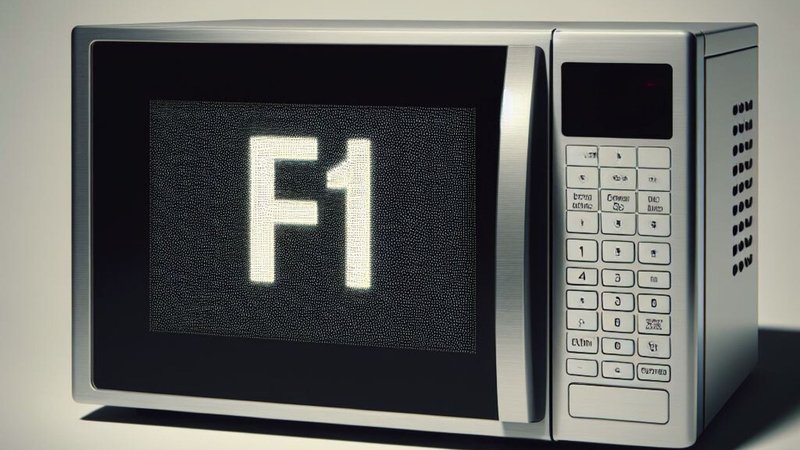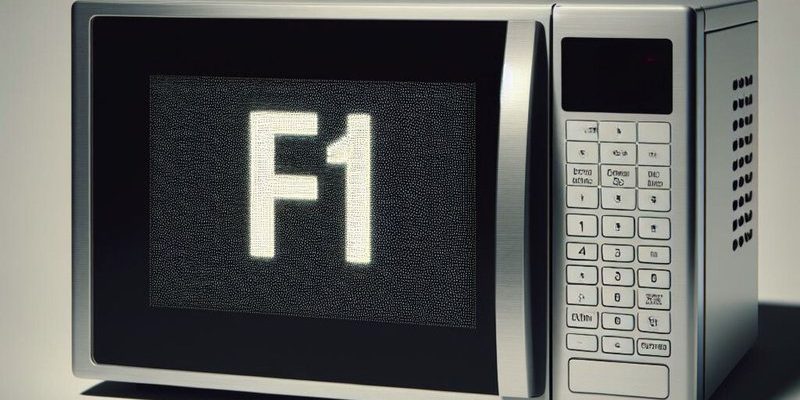
Now, you might be wondering how you can keep this F1 error at bay. The good news is that you don’t need to be a tech wizard to do so. With a few practical steps and regular maintenance, you can keep your microwave working smoothly. Think of these steps as regular dental check-ups for your microwave—preventative care ensures everything stays in top shape and avoids future headaches.
Understand the Common Causes of Error Code F1
Before diving into prevention, it’s crucial to understand what typically triggers the F1 error in GE microwaves. Knowing these causes gives you a head start in avoiding them. The first culprit is often moisture. You see, microwaves don’t like humidity any more than your hair does on a rainy day. Cooking foods that release a lot of steam, or not properly venting the microwave, can lead to moisture seeping into the control board. This dampness can confuse the electronics, much like how a sudden downpour might make your socks squishy and uncomfortable.
Another common cause is the age and wear of the microwave keypad. Over time, the keypad on your microwave can get worn out from all those button presses. It’s much like an old, beloved pair of shoes wearing thin at the sole—eventually, they just don’t work as well as they once did. Sticky or unresponsive buttons can lead to error messages, as the microwave might struggle to process your commands correctly.
Lastly, occasional power surges can also spell trouble. Just like a sudden spike in electricity can fry your home computer, it can disrupt the inner workings of your microwave. Your microwave is designed to handle typical voltage, but irregularities from storms or faulty wiring can create problems, including triggering that pesky F1 code.
Proactive Maintenance Tips for Your GE Microwave
Let’s move on to some practical steps to keep your microwave running smoothly. First, address the moisture issue by ensuring good ventilation. When cooking, especially with high-steam foods, make sure your kitchen is well-ventilated. If your microwave has an exhaust fan, use it. This simple step can prevent moisture buildup around and inside your appliance. Imagine it like airing out your house on a spring day—it refreshes and keeps things dry.
Next, pay attention to your microwave’s keypad. Keeping it clean not only maintains hygiene but also ensures its longevity. Just like wiping down your smartphone screen, regularly clean the keypad with a damp cloth to remove grease or food splatters. If any button feels sticky or doesn’t click well, it may be time for a gentle inspection. If issues persist, don’t hesitate to consult a professional for keypad replacement before it spirals into an F1 error.
Finally, consider installing a surge protector for your microwave. It’s like offering your appliance a cozy blanket against power fluctuations. This can be a simple yet effective measure to safeguard your microwave from electrical hazards. If you live in an area prone to storms or erratic electricity supply, this step is particularly crucial.
Additional Considerations and Future-Proofing
While these maintenance tips are essential, sometimes preventative measures also involve considering when it’s time to upgrade. If your microwave is over a decade old and frequently shows errors, it might be more cost-effective to invest in a new model. Modern microwaves come with improved technology that handles moisture and electrical fluctuations better, much like how newer cars have advanced features for safety and efficiency.
Moreover, if after following these steps the F1 error still rears its head, it’s wise to call in an expert. Attempting a DIY fix without proper knowledge can lead to more harm than good. Think of it like trying to cut your own hair without a mirror—it might not end well.
By taking these proactive measures, you’re not only preventing the F1 error but also extending the lifespan of your microwave and ensuring it serves you well into the future. Remember, a little care goes a long way, and keeping these tips in mind will help you avoid unnecessary stress and costly repairs. Here’s to a future of hassle-free microwave experiences!
